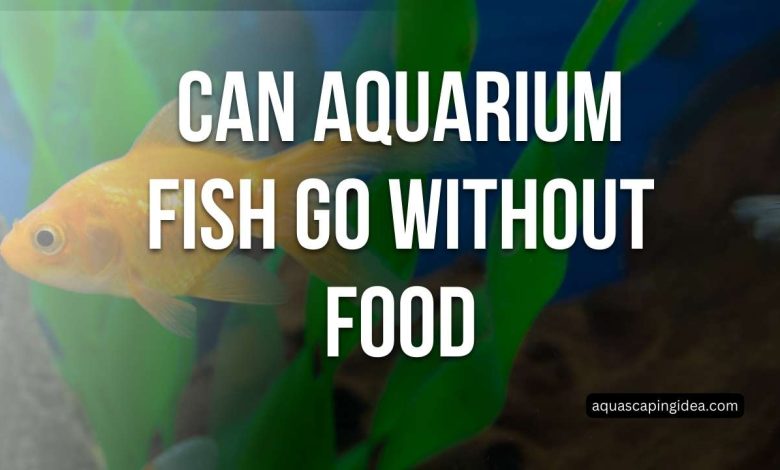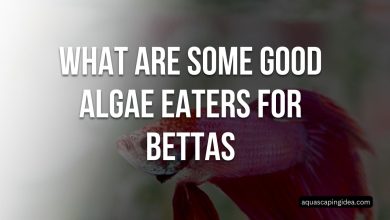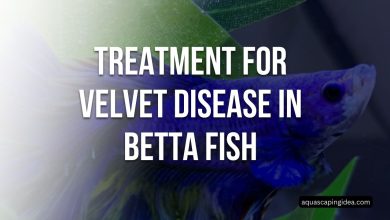How Long Can Aquarium Fish Go Without Food?

Aquarium fish can generally go without food for several days to a couple of weeks, depending on various factors. Larger fish species with slower metabolisms, like goldfish and angelfish, can survive up to 2 weeks without food. Smaller fish with higher metabolic rates, such as guppies and tetras, typically last around 1 week without nourishment. Water temperature, age, health, and water quality also play significant roles in determining how long fish can endure fasting periods.
Ultimately, monitoring your fish’s behavior and taking necessary precautions can help ensure their well-being during temporary food deprivation.
The Significance of Fasting Knowledge in Aquarium Care
Aquarium fish are mesmerizing creatures that bring serenity and wonder into our lives, but their care demands a profound comprehension of their unique needs. While we strive to provide a consistent and nutritious diet, unforeseen circumstances or personal commitments may occasionally prevent us from feeding our aquatic pets. In such situations, knowledge of their fasting capacities becomes invaluable, enabling you to ensure their safety and health during times of involuntary food deprivation.
Factors Influencing Fish Fasting Duration:
- Species and Size
- Larger fish species tend to have slower metabolisms and can endure longer periods without food.
- Smaller fish have higher metabolic rates, requiring more frequent nourishment.
- Water Temperature
- Higher water temperatures accelerate metabolism, shortening fasting durations.
- Lower temperatures slow metabolism, allowing fish to go longer without sustenance.
- Age and Health
- Young, developing fish require more frequent feeding than mature adults.
- Sick or stressed fish may exhibit reduced appetites and shorter fasting periods.
- Water Quality
- Poor water conditions can stress fish and diminish their fasting abilities.
- Excellent water quality can extend the duration they can thrive without food.
Common Aquarium Fish and Their Fasting Capacities:
- Goldfish: Hardy fish that can survive up to 2 weeks without food under ideal conditions.
- Bettas: These resilient fish can endure up to 2 weeks without sustenance, but may become stressed or aggressive.
- Guppies: Smaller species, typically lasting up to 1 week without food.
- Tetras: Varying by species, tetras can generally survive up to 1 week without nourishment.
- Cichlids: Larger cichlids can go up to 2 weeks without food, while smaller varieties may last 1 week.
Telltale Signs of Hunger and Starvation:
- Increased Activity and Aggression
- Fish may exhibit heightened activity and aggression as they search for food sources.
- Faded Colors and Reduced Vitality
- Lack of nutrients can cause fish to lose their vibrant colors and appear lethargic.
- Weight Loss and Sunken Bellies
- Prolonged fasting can lead to visible weight loss and sunken abdominal regions.
- Opportunistic Eating Behaviors
- Extremely hungry fish may resort to consuming aquarium plants, gravel, or even their own waste.
Preparing for Extended Fasting Periods:
- Gradually Reduce Feeding Before Departure
- A few days before leaving, slowly decrease the amount of food given to your fish.
- Invest in an Automatic Feeder
- Automatic feeders can dispense pre-measured portions at set intervals, ensuring consistent nourishment.
- Enlist a Fish Sitter
- A trusted friend or professional service can ensure your aquatic pets receive proper care during your absence.
- Explore Live Foods
- Live foods like brine shrimp or microorganisms can provide sustenance for short periods.
Returning to Regular Feeding After Fasting:
- Gradual Food Reintroduction
- Slowly increase the amount of food given to avoid potential digestive issues.
- Monitor Water Quality
- Fasting can lead to waste accumulation, necessitating water changes.
- Watch for Signs of Illness
- Prolonged fasting can weaken fish, making them susceptible to diseases.
Fasting Duration Table for Common Aquarium Fish:
| Fish Species | Maximum Fasting Duration |
|---|---|
| Goldfish | 2 weeks |
| Bettas | 2 weeks |
| Guppies | 1 week |
| Tetras | 1 week |
| Cichlids | 1-2 weeks (size dependent) |
| Angelfish | 2 weeks |
| Corydoras | 1 week |
| Gouramis | 1-2 weeks |
| Plecos | 2-3 weeks |
| Discus | 1 week |
Factors Affecting Fasting Duration
Species and Size:
Different fish species and their sizes play a crucial role in determining how long they can go without food. Generally, larger fish with slower metabolisms can survive longer periods without nourishment compared to smaller species with higher metabolic rates.
Water Temperature:
The temperature of the aquarium water significantly impacts a fish’s metabolism and, consequently, its fasting abilities. Higher water temperatures accelerate metabolism, causing fish to burn through their energy reserves more quickly, while lower temperatures slow down metabolism, enabling fish to last longer without food.
Age and Health:
A fish’s age and overall health condition influence its fasting capabilities. Young, growing fish require more frequent feedings to support their development, while mature adults can typically endure longer periods without food. Sick or stressed fish may have reduced appetites and shorter fasting durations.
Water Quality:
The quality of the aquarium water can either extend or diminish a fish’s ability to fast. Excellent water conditions with optimal parameters (pH, ammonia, nitrite levels, etc.) promote fish health and allow them to conserve energy more efficiently during fasting periods. Poor water quality, on the other hand, can stress fish and deplete their energy reserves more rapidly.
Common Aquarium Fish and Their Fasting Capabilities
Goldfish:
- Hardy Fasting Abilities
- Up to 2 Weeks Without Food
- Ideal Water Conditions Enhance Survival
Bettas:
- Resilient Labyrinth Fish
- 1-2 Weeks Fasting Capacity
- Potential Aggression During Fasting
Guppies:
- Small but Energetic Livebearers
- Around 1 Week Without Nourishment
- Size and Activity Level Influence Duration
Tetras:
- Vibrant Schooling Fish
- 5-7 Days Typical Fasting Range
- Species-Specific Variations
Cichlids:
- Diverse Fasting Abilities
- Large Species Can Fast 2+ Weeks
- Smaller Cichlids 1 Week or Less
Signs of Hunger and Starvation
Increased Activity and Aggression:
As fish become increasingly hungry, they may exhibit heightened activity levels and aggressive behaviors. They may swim more actively, constantly searching for food sources, and become territorial or hostile toward tankmates.
Color and Vitality Changes:
Prolonged lack of nutrition can cause fish to lose their vibrant colors and appear dull or faded. Their overall vitality and energy levels may also decrease, leading to lethargy and a lack of enthusiasm for swimming.
Weight Loss and Physical Indicators:
Severe weight loss is a clear sign of starvation in fish. Their bodies may become thin, and their abdominal areas may appear sunken or concave due to a lack of food in their digestive systems.
Opportunistic Eating Behaviors:
When extremely hungry, fish may resort to eating materials they would typically avoid, such as aquarium plants, gravel, or even their own waste, in a desperate attempt to obtain nutrients.
Preparing for Extended Fasting Periods
Gradual Feeding Reduction:
A few days before leaving for an extended period, it’s advisable to gradually reduce the amount of food given to your fish. This can help them adjust to a fasting state and minimize potential digestive issues upon your return.
Automatic Feeders:
Investing in an automatic feeder can be a convenient solution for providing your fish with pre-measured portions of food at set intervals during your absence, ensuring they receive sustenance.
Hiring a Fish Sitter:
Enlisting the help of a trusted friend or professional fish sitter can be a reliable option for ensuring your aquatic pets are properly cared for, including being fed, while you’re away.
Providing Live Foods:
Introducing live foods, such as brine shrimp or microorganisms, can offer a source of nourishment for your fish during shorter fasting periods, as they may continue to graze on these live organisms.
By being aware of the signs of hunger and starvation, and properly preparing for extended fasting periods, aquarium owners can minimize stress and potential health issues for their fish, ensuring their well-being while navigating temporary food deprivation.
Frequently Asked Questions
Can I leave my fish without food for an extended vacation?
A: While many fish species can endure a week or two without food, extended vacations lasting several weeks or months may require alternative arrangements like an automatic feeder or fish sitter.
Is it better to underfeed or overfeed fish during fasting periods?
A: Underfeeding is preferable to overfeeding during fasting periods, as overfeeding can lead to water quality issues and potential health problems.
Can fasting help control algae growth in my aquarium?
A: Yes, fasting can temporarily reduce waste and nutrient levels, potentially helping to control algae growth. However, it’s crucial to strike a balance and not deprive your fish of essential nutrients for prolonged periods.
How often should I perform water changes during fasting periods?
A: Water changes may be required more frequently during fasting, as waste and ammonia levels can accumulate without regular feeding. Monitor water parameters and perform water changes as needed.
Can fasting treat certain fish diseases or conditions?
A: In some cases, short-term fasting can benefit certain fish diseases or conditions, such as constipation or bloating. However, consulting an experienced aquarist or veterinarian is essential before attempting any therapeutic fasting regimen.
Conclusion
Mastering the art of aquarium fish fasting is an essential aspect of responsible fishkeeping. By understanding the factors that influence your finned friends’ ability to endure periods without food, you can ensure their well-being during unavoidable food deprivation. Remember, every species and individual fish may have unique needs, so observing their behavior and adapting your approach accordingly is crucial.


